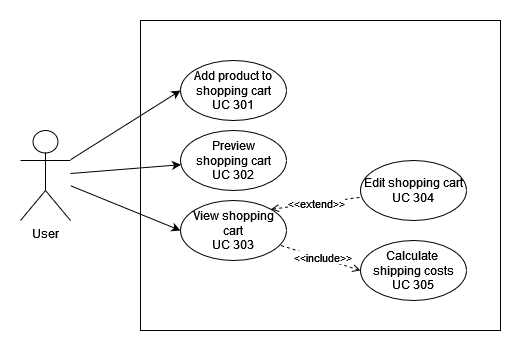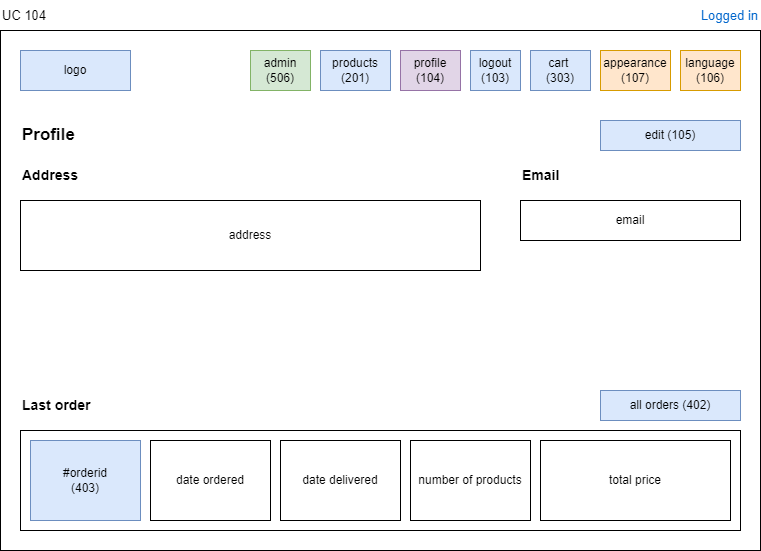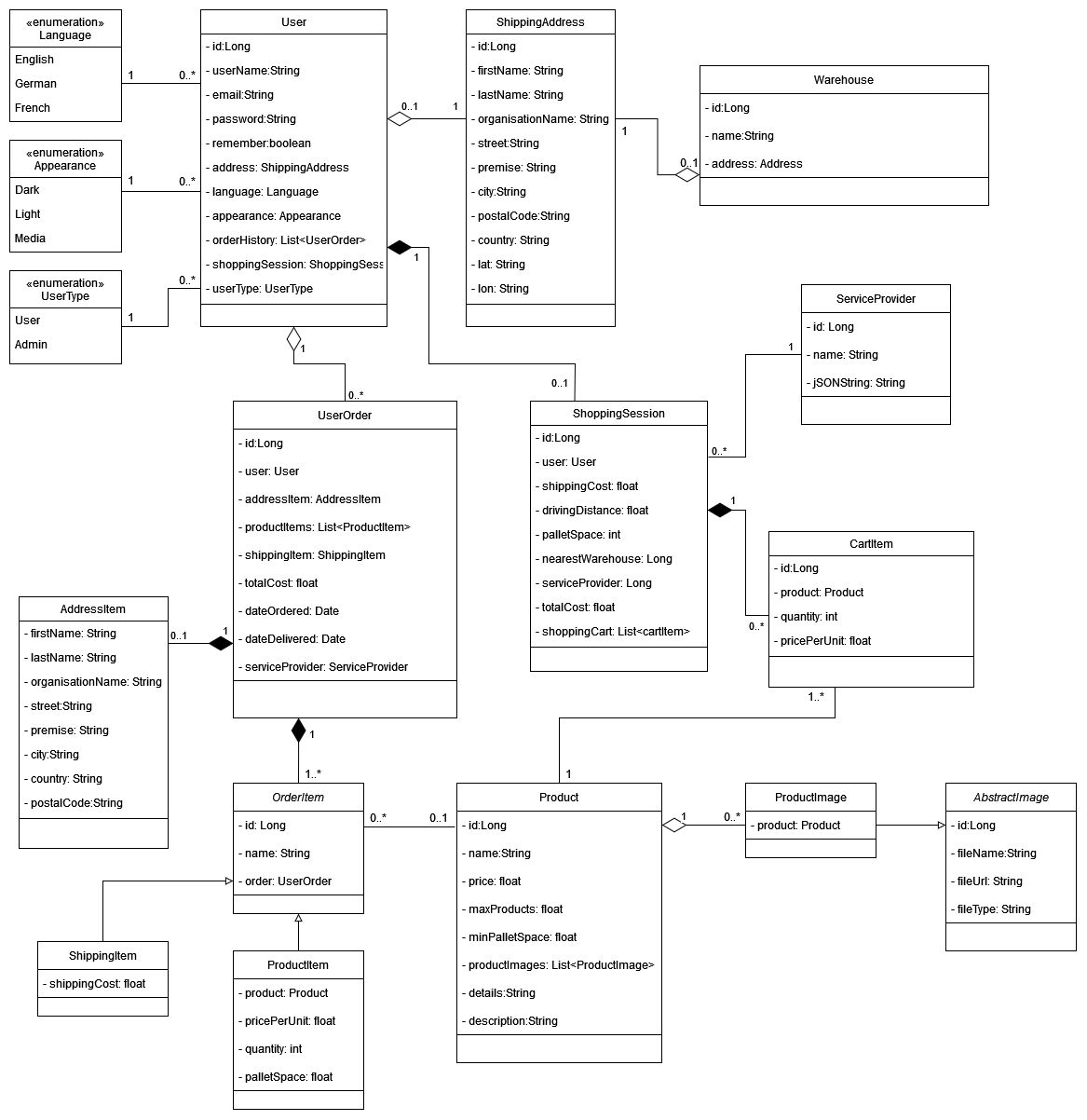Introduction | Getting Started Guide | Feature List | Frontend Development
The PalletPals webapp was developed as a part of the IT-Project module of the Business Information Technology study programme at FHNW by Daniel Locher (@dantheman625) Tibor Haller (@972C8), and Marco Kaufmann (@mahgoh).
The project was developed in two repositories: palletpals-webapp and palletpals-client. palletpals-webapp contains the main application and the final web application. The frontend was developed in the repository palletpals-client - more information can be found in the repository.
The api endpoints were designed with the help of Postman. The API design can be found at: https://documenter.getpostman.com/view/17679206/Uz5AseV9.
The purpose of this README file is to provide a thorough description of the system with all its components. If you seek to receive information about how to use the system or need help with certain functionalities, please conduct the Getting Started Guide.
The content is structured based on the project milestones, more concretely the three main phases of "defining and documenting the requirements", "technical design", and "implementation".
In addition to the minimal requirements, the following features were implemented
-
Good user interface with client-side validation, attractive appearance, and responsive design
-
Multilingual support for 3 languages (english, german, french)
-
Appearance of web app can be changed (light, dark, system)
-
Multiple warehouse locations
-
Multiple shipping service providers
-
Administrator role
-
Admin dashboard to create, update or delete warehouses, service providers and products (e.g. edit description, prices, etc.)
-
Shopping cart for users with overview of products to be ordered and shipping costs
-
Users can submit orders through the shopping cart
-
Order history provides users with an overview of the past orders
-
Product images can be uploaded for products to further improve the web shop appearance to users
-
Users can edit their profile (e.g. change their shipping address, e-mail, or password)
-
Interaction with external API to calculate shipping distance from warehouse to user's shipping address to calculate the shipping costs.
-
Server logging
In phase 1 requirements, the necessary use cases were created as a basis for the implementation. As an example serves the overview of the use cases relevant to the shopping cart, which is one of the key functionalities.
All use cases can be found in /documents/deliverables/PalletPals_Phase1_Requirements.pdf.
For each use case, a mockup was created in phase 1. In phase 3, these mockups served as guidance for creating the visual appearance of the frontend. Furthermore, they helped to make sure that the defined requirements for the backend and the communication protocol were sufficient to achieve the desired user interface. Below, the mockup for the use case 104 - View user data shows the general layout that the profile page shall have.
Mockups for all use cases can be found in documents/mockups.
The Class Diagram shall give the reader of this document an overall perspective about the class structure of our application. Mostly, this diagram aims to be self-explanatory, nevertheless we like to point out a few things.
As our goal is to exceed the basic requirements, we plan to develop a more holistic online shop experience. One key issue was to ensure that orders reflect a snapshot of the relevant data, which is important when for example the user changes his address after an order was finalized, or that for example historic order data are preserved correctly. Wehave roughly split our classes into three overall data groups:
-
Static Data
This group includes all regular data classes, such as classes with product and user related data. A user should be able to change his personal data, as well as product data can change over time.
-
Session Data
We pursue to offer a real online shop feeling. With this in mind, we introduced session data to preserve a user’s shopping basket over a certain period. Even if the website will be left, the shopping cart of a user is still saved in our database. Therefore, if this user revisits our website, he or she can flawlessly continue his or her purchase. Session data includes the classes ShoppingSession and CartItem. Once a user submits his order, the session data is used to create an order with the correct information, such as quantities or shipping address.
-
Processed Data
After a user has confirmed the order, the data gathered in his or hers shopping session will be changed to processed data, using the order class. According to the user’s shopping session new objects of the classes Order, AddressItem, ShippingItem, and ProductItem will be created and referenced by the new order object. AddressItem is part of Order as it is only relevant in that context and only used to store address attributes as part of the class. The logic behind this process is, that the user shall have an history of his or her orders. These objects are important to ensure the data integrity as simply working with references incurs the risk of faulty order when some data is updated at a later point. One example that must be handled is that the user updates his shipping address after finalizing an order. Furthermore, the ShoppingSession object with its related CartItems get deleted as soon as the order has been saved to the database, meaning that the user’s shopping cart is emptied.
Sequence diagrams were created to provide information about the communication between the frontend and the backend. Interaction happens via HTTP requests made by the frontend. The backend only responds to request and never makes a request to the frontend by itself (Client-Server Architecture).
For each use case, a sequence diagram was created in phase 2 of the project. These diagrams served as guidance during phase 3 for both the frontend and the backend. For example, in the use case of 304 - Edit shopping cart, communication happens as follows:
Sequence diagrams for all other use cases can be found in the directory documents/sequence-diagrams.
The Postman API Platform was used for the endpoint design and during the implementation of the backend. Using Postman allowed us to create the API collaboratively and efficiently thanks to a synchronized workflow. Furthermore, Postman also allowed us to create the API documentation through an out-of-the-box, user-friendly, web-view of the API.
Please check out our endpoint design at https://documenter.getpostman.com/view/17679206/Uz5AseV9 for a user-friendly web-view of the API.
In addition, the overview of the available api requests is found in the documents folder to ensure availability of the resource in the future.
The backend was initially based on a fork of https://github.com/DigiPR/acrm-webapp. The following excerpt is copied from acrm-webapp and explains the main project dependencies:
This Web application is relying on Spring Boot and the following dependencies:
To bootstrap the application, the Spring Initializr has been used.
The following documentation shall highlight certain key functionalities implemented in the backend.
To improve the user's experience, product images can be created and added to products. One product can have zero or multiple product images.
The class ProductImage extends AbstractImage, which holds the main attributes relevant to images (such as fileName, fileType and fileUrl). Using this approach, future extension of the webapp to support other image types is easily supported.
The image implementation uses single table inheritance and a discriminator column. This effectively means that only a single table is created in the database (although there are more classes) and that the discriminator is used to determine which class the particular row belongs to. More information is found at https://en.wikibooks.org/wiki/Java_Persistence/Inheritance#Single_Table_Inheritance
Images are stored in the directory "/uploads" and a database entry is created for the ProductImage, which holds the relevant information (fileName, fileType, fileUrl). When a GET request is sent, the entry is retrieved from the database and the image is taken from the file system using this information.
In a real world, the service could be further improved by storing images directly in an external cloud storage instead of in the project directory.
The shopping session provides a user with a shopping cart that includes the individual products to be ordered and the calculated costs, such as shipping costs. It is preserved for users even if they log out.
The shopping session holds a shopping cart consisting of CartItems. CartItems represent the ordered Product, thus having a reference to the product with quantity specified by the user.
When users submit an order, the shopping session is used as the basis to create the order based on the ordered products and quantities.
Orders are central to the webapp and represent a snapshot of the user's order of products and quantities.
A UserOrder represents a finalized submitted order by a user that takes the shopping session to calculate (shipping) costs based on the ordered products and quantities, using ServiceProvider and Warehouse.
A UserOrder references other classes to represent a complete user order. When a user submits a new order, the current shopping session with references is translated into a snapshot, represented by a UserOrder, that includes all relevant classes, such as ProductItem, ShippingItem, and AddressItem. Users can view their orders using the provided order history, with all details.
An abstract class OrderItem is used to represent the data relevant for orders. Both ProductItem and ShippingItem extend the abstract class OrderItem. An abstract class is used to support further extension of the functionality to hold different data relevant for orders. First off, one UserOrder can hold one or multiple ProductItems that each represent one ordered product together with the specified ordered quantitiy. Furthermore, one UserOrder references one ShippingItem, which holds the calculated shipping costs.
In addition to this reference, an order must also hold the current address of the user that the shipment is sent to. In order to ensure that the address is correct, it is not possible to use a simple reference, because if a user changed his address at a later point, the shipment would reference the new, possibly wrong address. Therefore, the class AddressItem is used and referenced by UserOrder to represent a snapshot of the address that the shipment should be sent to.
In a real application, service providers would pick the order and deliver it. Our idea was that in a real life scenario, these service providers would have Excel sheets for their price plans. Therefore, we implemented an easy way to implement these price plans, without much manual work. Now, an admin is able to upload a .csv file through the front end. The system will save it as a json String, and whenever the price plan needs to be accessed, the system will build arrays out of the string.
The system calls external API's during two use cases. First, whenever a new address is saved, or an existing one is updated, Our system calls TrueWay Geocoding API to get exact coordinates of the address. These coordinates will be used later on, when the distance between warehouses and the client address is calculated. To get the distances, our system calls TrueWay Matrix API.
Whenever a shopping session is saved, shipping costs are always calculated. This calculation is executed
in three steps.
First, the system retrieves distances from all warehouses to the client address. The warehouse
with the shortest distance will be linked to the shopping session and the distance is saved.
Afterward, the required pallet space is
calculated. Whatever number of pallet is required is rounded up to the next full integer and is saved in the shopping session.
Last but no least, with the distance and pallets required our system retrieves shipping costs form all service providers according to
their price plain.
Eventually, the service provider with the cheapest rate will be linked to the shopping session and the shipping
costs are saved.
This application uses the embedded SLF4J logger from Spring Boot. Throughout all Endpoints the system logs activities when data is saved or altered. Also error messages are logged. Log messages are displayed in the console and additionally they are saved in a log file. Info, Warning, and Error messages are considered. The rest will not be saved to the log file.
The frontend was developed in a separate repository using React as a framework, Tailwind CSS for styling, Vite for frontend tooling, and Vitest as testing framework. Instructions on how to develop, build, and test the frontend can be found in the separate repository. During development, a reverse-proxy is required to simulate an environment with one domain to fully support the usage of authentication Cookies. As a result, a basic reverse-proxy p3 was setup using Go and is part of the frontend repository as well.
- React: Framework
- React Router: Client-side routing
- Tailwind CSS: Appearance
- Vite: Frontend tooling
- Vitest: Test framework
- i18next: Internationalisation
The full list of all dependencies can be found by looking at the package.json file.
The application is built using React and React Router. This enables a component-based approach that allows a fast and great developer experience, and improves to extendability in comparison to static HTML files. Furthermore, the backend and frontend operate independently and are interchangebly.
- React makes interacting and manipulating DOM elements easy. Hooks provide an easy way to manage state and events during the application lifecycle. Contexts provide a simple way to share state across the application (e.g. authentication state).
- React Router enables client-side routing without hard page reloads, resulting in a better user experience.
- Component-based approach allows reusing components at different locations in the application.
- Browser built-in APIs like Fetch allow to easily make request to the backend.
- i18next enables a simple-to-curate translation service that is easily extendible.
The power of utility classes in CSS, especially, when working in a team is incredible. We use Tailwind CSS to make use of this and ensure a great collaboration and maintainability in the future. This means that we did not write a single line of CSS but used utility classes instead. This promises to lead to a more consistent visual appearance and easier collaboration and maintenance. To learn more about this approach and it's benefits read the article by Adam Wathan the creator of Tailwind CSS.
Thanks to the component-based approach, the use of utility classes makes even more sense. Otherwise, there would be the chance that we'd had to rewrite the same elements over and over. If they have many utility classes, this can result in a loss of clarity. With the use of components, the readability is improved a lot and the utility classes describe precisely the appearance of the element.
Thanks to the Tailwind CSS JIT compiler and the frontend tooling of Vite, all used classes are generated just-in-time during development. Finally, when the project is built, a CSS bundle with only the used classes is created.
During development, Vite performs Hot Module Replacement (HMR) and loads the individual modules directly, for a fast developer experience. Finally, when building for deployment, Vite (or rather Rollup) bundles the code into static assets. By default, this results in a single HTML file along with a JS bundle, a CSS bundle, and potential assets. The JS, CSS, and asset files are hashed to overcome Browser caching when something as changed. These static files are then served by the backend.
Give an overview of the webapp
- Backend: Daniel Locher & Tibor Haller
- Frontend: Marco Kaufmann
- Conceptual: All
Note that some overlap between frontend and backend responsibilities existed.
- Phase 1: Define and document requirements
- Phase 2: Technical Design
- Phase 3: Implementation




